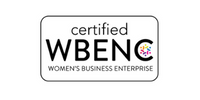Finding Common Ground: Navigating Inclusion and Diversity in a Polarized Culture
In our world today, people often have different opinions and beliefs, which can lead to disagreements and divisions. This is called polarization. It can be challenging for organizations to embrace diversity, equity, and inclusion (DE&I) while also staying true to who they are. However, there are ways to find common ground and navigate these complexities. In this blog post, we will explore strategies for effectively embracing DE&I while staying authentic to your organization’s vision and values.
Step 1: Define Your Organization’s Mission, Vision, and Values To start, it’s important to clearly define what your organization stands for. This includes your mission, which explains the purpose of your organization and the impact you want to make. Craft a mission statement that shows your commitment to DE&I and the importance of inclusivity and fairness. You should also create a clear vision that describes a future where diversity is celebrated, and inclusion is a part of everything you do. Lastly, establish a set of values that reflect your organization’s principles, such as respect, integrity, and fairness, with a specific focus on diversity and equity. By defining these aspects, you will have a solid foundation for your DE&I efforts.
Step 2: Stay True and Authentic to Your Vision Even when times get tough, it’s crucial to stay true to your organization’s vision. Make a commitment to uphold your vision for diversity, equity, and inclusion, even in the face of challenges or pressure from others. By staying true to your vision, you not only maintain your organization’s integrity, but you also inspire trust and loyalty among your employees, customers, and stakeholders. When you consistently show your dedication to DE&I, you create a culture of inclusivity that will lead to long-term success.
Step 3: Understand the Influence of Employee and Customer Decisions It’s important to recognize that both your employees and customers make decisions based on the alignment of your vision and values. Employees want to work in places that reflect their own values, where they feel valued, respected, and included. By prioritizing DE&I initiatives, you can attract and retain talented individuals who share your organization’s vision. Similarly, customers are increasingly drawn to businesses that share their values. When you align your organization’s vision and values with DE&I principles, you not only meet customer expectations but also tap into a growing market that values inclusivity and social responsibility.
Step 4: Communicate and Show Your Commitment Effectively communicating your organization’s commitment to DE&I is key. Share your DE&I initiatives, progress, and challenges with your employees, customers, and stakeholders to be transparent. Implement inclusive policies and practices that align with your vision and values, and make sure they are consistently upheld throughout your organization. Encourage open dialogue, feedback, and suggestions from your employees and customers, showing them that you are willing to listen and improve.
Step 5: Keep Learning and Adapting DE&I is an ongoing journey that requires continuous learning and adaptation. Stay informed about the best practices and industry standards in diversity, equity, and inclusion. Regularly assess your DE&I efforts, measure progress, and identify areas for improvement. Actively seek feedback from your employees and customers to understand their experiences and perspectives, and make necessary adjustments to ensure your organization remains aligned with its vision and values.
Step 6: Finding Common Ground: Finding common ground means discovering shared values and beliefs that can bridge the gaps between people with different opinions. In a polarized culture, it is essential for organizations to seek common ground when navigating diversity and inclusion. Instead of focusing on differences, organizations should encourage dialogue and understanding among individuals with diverse perspectives. By fostering an environment where everyone feels heard and respected.
Navigating diversity and inclusion in a polarized culture requires organizations to define their identity through a clear mission, vision, and values. By staying true and authentic to their vision, understanding the influence of employee and customer decisions, and effectively communicating and demonstrating their commitment to DE&I, organizations can foster a culture of inclusivity. Additionally, finding common ground by promoting dialogue and understanding among individuals with different perspectives can bridge the gaps and create a stronger and more united community. Embracing diversity and inclusion while staying true to core values is not only a moral imperative but also a strategic advantage that can lead to long-term success. By navigating the complexities of DE&I in a polarized culture, organizations can create an inclusive environment where all individuals feel valued, respected, and empowered to contribute their unique perspectives and talents.




